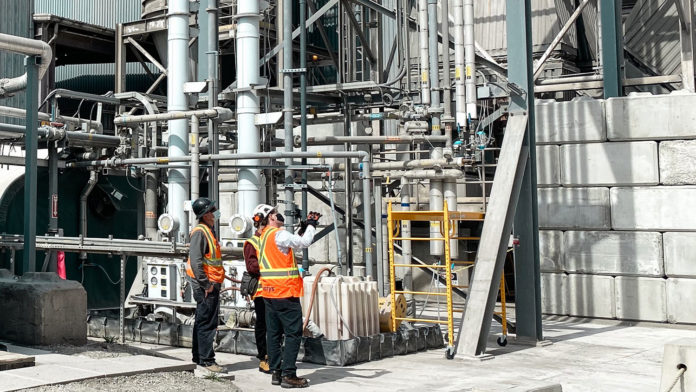Researchers from the University of Alberta’s Faculty of Engineering have developed and tested a promising carbon-capturing material that offers an efficient way to pull carbon dioxide out of industrial emissions. The CO2-capturing microporous material attracts gas molecules and sees them stick to its surface.
The material, named Calgary framework-20 (CALF-20), belongs to a family of microporous solids called metal-organic frameworks. The team tested the capabilities of CALF-20 to uncover the unique properties that make it an excellent candidate for CO2 capture. The idea behind metal-organic frameworks has been around for decades after they began proving that a combination of metals and organic molecules, known as linkers, had the potential of concentrating gases from a mixture.
In the case of CALF-20, a single gram has a surface area of more than 500 square meters. These materials can be placed in a column, much like a catalytic converter, and essentially fastened to the end of a smokestack. In cases where the emissions are made up of nitrogen and CO2, the nitrogen comes out first while the CO2 is left behind, adhering to the material.
To move the CO2 along so the material can be reused, either the pressure in the column is brought down, and the concentrated CO2 is vacuumed out, or the system is heated up using waste heat or steam. “When you provide heat, the CO2 is released, and we can start collecting it in a more concentrated form than what you sent in,” said Arvind Rajendran, associate professor in the U of A’s Department of Chemical and Materials Engineering.
While these materials often work in the controlled confines of a lab, they work in the presence of water or other impurities. That’s where Rajendran’s team stepped in.
“The innovation in this material is that it can handle water nicely. This means you don’t have to dry your gas before you filter it through this material, which reduces the need for a whole bunch of energy,” he said.
Rajendran added that the experiments needed to characterize how materials perform in the presence of water are challenging and laborious: “We had to develop new techniques, and it took the enormous patience of Tai to demonstrate the exceptional ability of CALF-20 to concentrate CO2 even in the presence of water.”
Another challenge for carbon-capturing materials is that even the tiniest quantities of emissions byproducts, such as sulfur dioxide and nitrous oxide, can kill the ability of these materials to capture CO2, Rajendran explained. One of the biggest advantages of CALF-20 is that it works under practical conditions for thousands of hours, whereas almost all other previous developments did not.
Once concentrated, the CO2 is either compressed and stored in geological formations, pushed back into old wells for enhanced oil recovery, or converted back into fuel, such as methanol, to be used in the creation of other products.
According to the researchers, the carbon-capturing material is suitable in an industrial setting and is now undergoing industrial-scale testing by B.C.-based industry partner Svante in a cement plant at a capacity of one tonne per day.
“This is possibly the first large-scale commercialization of a metal-organic framework,” Rajendran said. “These are the next-generation carbon capture technologies that not only reduce CO2 emissions but reduce the cost. These innovations were made possible through multi-institution and interdisciplinary collaborations of synthetic and theoretical chemists, chemical engineers, and industry.”
